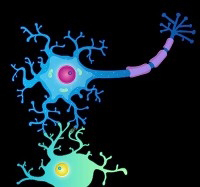Archived Content
The National Institute of Mental Health archives materials that are over 4 years old and no longer being updated. The content on this page is provided for historical reference purposes only and may not reflect current knowledge or information.
Same Behavior, Different Brain in Adolescent and Adult Rats
• Science Update

A study that measured the activity of single cells in the brains of rats found striking differences between adolescents and adults even when both behaved identically on a task motivated by a reward. The finding offers clues to the neurological underpinnings of adolescent behavior and this age group's vulnerability to mental illness.
Background
Numerous lines of research suggest that the adolescent brain, in both animals and humans, undergoes substantial change and maturation. By understanding of the nature of these changes scientists aim to clarify why mental illnesses like schizophrenia and mood disorders often have their first onset in adolescence and why rates of substance abuse and risky behavior is greater for this age group than others.
This Study
Researchers David Sturman and Bita Moghaddam at the University of Pittsburgh recorded the activity of single neurons in adolescent and adult rats as they worked for food rewards. The rats learned a very simple task—poking their nose into an illuminated hole—to receive a food reward. Such simple tasks are a building block for more complex behavior and make it possible to measure brain activity matched to action.
As the rats performed the task, investigators recorded the activity of single neurons in the orbitofrontal cortex, a part of the brain that is involved in the expectation of reward. Prior research has found that this part of the brain is not fully developed in adolescents. In this study, even when adult and adolescent rats behaved in exactly the same way in order to get the food reward, the pattern of firing of single cells in their brains was different. In comparison with adults, at key moments in the test—such as when they received the food reward—there was less inhibition of neuronal activity in the adolescents.
There were also differences in the levels of local electrical potentials which result from synchronized firing of groups of neurons. The levels of these potentials may reflect the capacity for coordinated firing of neurons across brain regions. The observed differences between adults and adolescents could be a reflection of less mature, less efficient connections in the brain in adolescents.
Significance
Brain activity represents an ongoing balance between excitatory and inhibitory activity. Earlier research has identified differences in brain activity between adults and adolescents; these investigators drilled down to the activity of single cells to try and identify the neural roots of differences in brain function linked to rewards; the first time scientists have done so in adolescents. The approach used in this work allowed them to watch how the adolescent brain responds to rewards resulting from behavior in real time.
The authors point out that inhibitory activity is important to the coordinated firing of neurons. The reduced inhibition they saw in adolescents suggests that they may respond more intensively than adults to reward. These more powerful responses may help explain the increased vulnerability of adolescents to the rewarding effects of alcohol and drugs. In addition, findings of differences in the regulation of neuronal firing observed in adolescents may ultimately help explain why schizophrenia—a disorder thought to represent an imbalance in inhibitory and excitatory activity in the brain—so often has its onset during adolescence and early adulthood. The exaggerated balance of excitatory and inhibitory activity in the brain observed in this work, superimposed on a genetically determined vulnerability to schizophrenia, might be a factor tipping someone towards illness. Monitoring how the adolescent brain processes events differently than the adult brain offers a powerful way to understand the vulnerabilities of young people at this age and develop means to intervene early.
Reference
Sturman, D.A. and Moghaddam, B. Reduced neuronal inhibition and coordination of adolescent prefrontal cortex during motivated behavior. Journal of Neuroscience 31:1471-1478, 2011.
